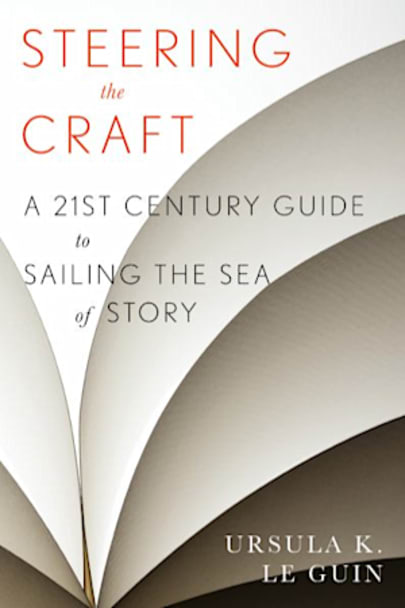A revised and updated guide to the essentials of a writer’s craft, presented by a brilliant practitioner of the art Completely revised and rewritten to address the challenges and opportunities of the modern era, this handbook is a short, deceptively simple guide to the craft of writing. Le Guin lays out ten chapters that address the most fundamental components of narrative, from the sound of … from the sound of language to sentence construction to point of view. Each chapter combines illustrative examples from the global canon with Le Guin’s own witty commentary and an exercise that the writer can do solo or in a group. She also offers a comprehensive guide to working in writing groups, both actual and online.
Masterly and concise, Steering the Craft deserves a place on every writer’s shelf.
more



Le Guin states this book is not for beginners, but many of the principles such as sentence length, use of repetition, and grammar struck me as vital areas of writing that newer authors should be aware of and should adopt as soon as possible.
While I always enjoy getting reminders of certain aspects of writing, much of this advice felt rather basic, especially after being told the book wasn’t for beginners. I also appreciate when writing guides offer up short examples so I can see the topic of discussion in action, but Steering the Craft, dare I say, goes overboard with examples. Some chapters feature a bare page and a half of advice/explanation, then follow it up by several pages of examples that are so long it’s difficult to see the point Le Guin wants to demonstrate.
Although much of the advice in the first few chapters felt somewhat basic without much substance, Le Guin’s section on point of view (POV) proved to the guiding star in Steering the Craft. In this chapter, Le Guin explains the different points of view, including the many types of third person POV. This has been explained in many books and on writing blogs across the Internet. But what makes Le Guin’s explanation stand out this time are her examples. She takes a short paragraph she has written and rewrites it in each of the many POVs. This was the first time I’ve seen POV explained and shown with such perfection and clarity.
Overall, I think this guide would have been much stronger if Le Guin had focused on POV, voice, and the more nuanced/advanced topics in the later chapters of the book, which are well worth a read.
Steering the Craft: A Twenty-First-Century Guide to Sailing the Sea of Story by Ursula K. Le Guin is a fantastic book, but don’t read it thinking it will teach you how to write a novel. Instead, read Write and Revise for Publication by Jack Smith to learn how to take an idea from an outline to a novel. Then, when you finish with that, buy this book, Steering the Craft.
In Steering the Craft, Ursula Le Guin talks about all the things that make good prose such as the sound of the language, rhythm, descriptions, story verse plot. She brings up all the rules we have heard over and over again such as: show don’t tell; write in active voice, not the passive voice; don’t use “be” verbs; and more — and then tells you how to break them. She talks about grammar only to explain how not to be afraid of the semicolon or comas. She slices through so much of the bad advice I see over and over again online with an effortless logic that had me laughing at the truth of her statements. This is not a humorous book, but I tend to laugh at things gives me relief. Writing as contortionist around such arbitrary rules is tough! This book gives you the license and freedom to use all the tools the English language provides without fear or guilt.
This book is orchestrated in such a way that it could be used in a writing group. Every chapter has exercises at the end to help you explore and learn the concepts by doing them. I am not a great team player, but I can see these activities would be beneficial for me to do on my own. I intend to go back and do them.
This book makes a lot of sense once you are already writing and discover that something just doesn’t sparkle. It is specifically for fiction writers and covers a lot of the vague frustrations of crafting elegant sentences, paragraphs, and chapters. I honestly would understand how vital her advice in this book was before I started writing. It is like learning to paint or play an instrument; certain lessons on make sense after you have been doing it some. So if you are a writer, I highly recommend this book!